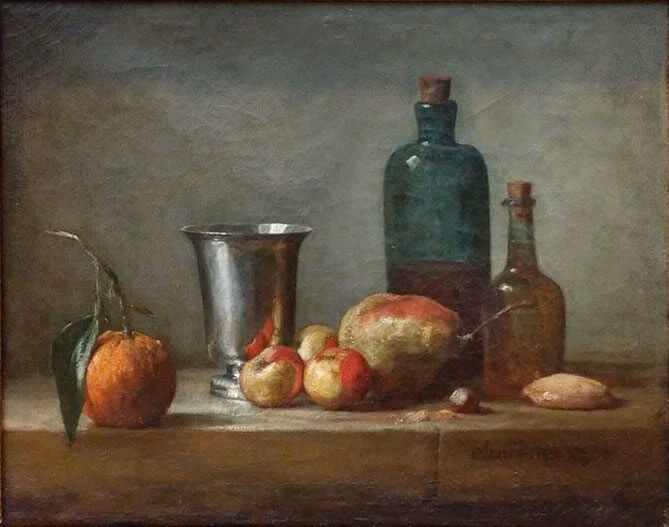John Goodrich blogs about viewing Jean-Baptiste-Siméon Chardin’s Seville Orange, Silver Goblet, Apples, Pear and Two Bottles (1750) at the Metropolitan Museum of Art, New York.
Goodrich writes that “the painting provides something of an existential experience. For more conventional artists, painting representationally means starting with a recognizable enough rendering and then adding the ‘art’: suggestive brushwork, stylistical flourishes, quirky details. It means, in short, a kind of likeness that assumes our powers of recognition and then entertains them: ‘Watch how feathery a petal can be. Who knew a peach could glow so brightly? Can you believe it’s just paint?’ But spend a few minutes with the Chardin, and you’ll experience something more elemental: patches of color optically shifting and jostling, provoking dislocations across the canvas. Forms possess a primal energy, and in fact become recognizable only to the extent that their energies are distinct. It’s as if Chardin was seeing his subject for the first time.”
